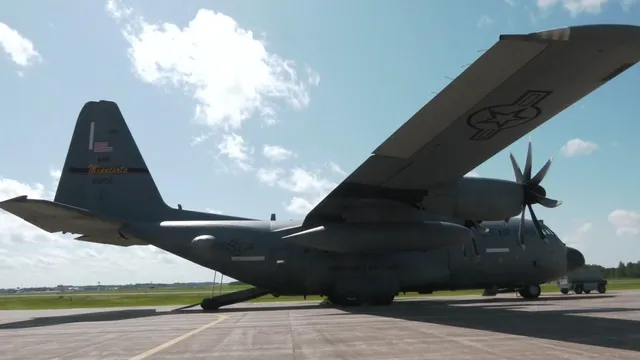
Minnesota Air Guard enhances homeland defense with F-16s
2025-06-25 13:24- The Minnesota Air Guard maintains a dual mission of readiness and responsibility.
- The 148th Fighter Wing has been on a deployment cycle since 2005, supporting federal missions overseas.
- The presence of F-16s enhances community security and provides crucial resources for military operations.
Express your sentiment!
Insights
The Minnesota National Guard plays a vital role in safeguarding the United States by maintaining a dual mission of readiness and responsibility. The Minnesota Air Guard's 148th Fighter Wing, renowned for operating F-16 fighter jets, has significantly contributed to this mission since at least 2005. This fighter wing has been on a deployment cycle every other year to support federal missions overseas, highlighting its commitment to U.S. military efforts in various theaters, including the Central Command and Pacific Command. The aircraft stationed in Minnesota help foster a skilled workforce consisting of pilots, mechanics, engineers, and technicians critical for both local and federal operations. The 148th Fighter Wing operates around 20 F-16 jets, the same type of aircraft used in significant operations, such as intercepting missiles aimed at Israel. Colonel Scott Prom emphasized the importance of having these jets available, not only for military readiness but also for the security of the local community. He mentioned that the skilled personnel, who include maintenance technicians and communication operators, are often local residents, thus cementing a relationship between the military and the community. This integration enhances public confidence in the military's role in protecting them. In addition to the fighter wing, the Minnesota Air Guard includes the 133rd Airlift Wing, based at the Minneapolis-St. Paul International Airport. This wing operates a fleet of eight C-130H aircraft, which are utilized for a range of missions, from transporting troops and equipment to airdropping supplies in crisis zones. Lt. Colonel Stacey Meiner, a seasoned pilot with over 20 years of experience, highlighted the C-130's capacity for flexible operations, especially in challenging environments. This versatility has been crucial in various deployments, including those in conflict zones such as Iraq and Afghanistan. Looking towards the future, the Minnesota Air Guard aims to modernize its fleet, incorporating next-generation aircraft such as the F-15 and F-35. This modernization is vital not only for maintaining operational effectiveness but also for the continued development of local personnel, ensuring they are trained on the latest technologies. Overall, the Minnesota Air Guard exemplifies a strong commitment to both state and national security while fostering a deep connection with its local community.
Contexts
The National Guard plays a vital role in the defense and security of the United States, functioning as a reserve component of the U.S. Armed Forces. Its dual mission encompasses both federal and state responsibilities, allowing it to respond effectively to a variety of emergencies and needs. On the federal level, the National Guard can be activated during times of national crisis, such as wars or natural disasters, and serves alongside active-duty military forces. The Guard members undergo rigorous training and maintain readiness for deployment at any time, making them essential in maintaining national security. The President of the United States has the authority to mobilize the National Guard for federal missions under Title 10 of the U.S. Code, which underscores its importance in responding to threats that exceed state or local capabilities. On the state level, the National Guard operates under the authority of individual state governors. This aspect of its duty emphasizes the Guard's role in responding to domestic emergencies, such as natural disasters like hurricanes, floods, wildfires, and local civil unrest. Each state maintains its own National Guard units that can be called into action by the governor to assist in these situations. This allows for a swift response to crises that require immediate intervention to protect the public and restore order. In this capacity, the National Guard provides critical support to local authorities and first responders, demonstrating its flexibility and commitment to addressing state-specific needs. Additionally, the National Guard engages in community assistance and support initiatives. Members often participate in disaster preparedness trainings, educational outreach, and humanitarian missions. This involvement not only strengthens the relationship between the Guard and the communities they serve but also enhances overall readiness for future emergencies. The Guard's focus on community engagement showcases the importance of building trust and cooperation, which are vital in times of crisis. Moreover, this relationship is beneficial in fostering local support for National Guard initiatives and ensuring a well-prepared populace. It is essential to recognize the myriad roles and responsibilities of the National Guard, as its existence reflects the balance between federal and state military assets. From responding to natural disasters to participating in international missions, the National Guard epitomizes versatility and responsiveness. As the geopolitical landscape evolves, so too does the necessity for a well-prepared National Guard, underscoring the importance of continuous investment in training, equipment, and community relations. These collective efforts enhance the National Guard's ability to fulfill its multifaceted roles, thereby ensuring it remains a pivotal force in safeguarding both citizens and national interests.